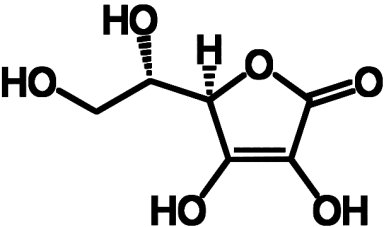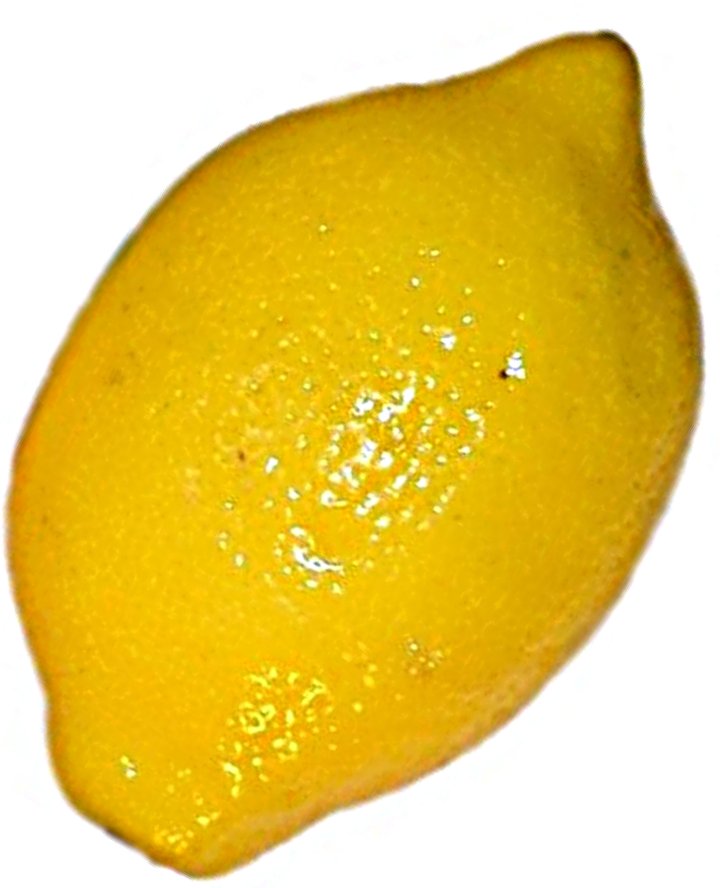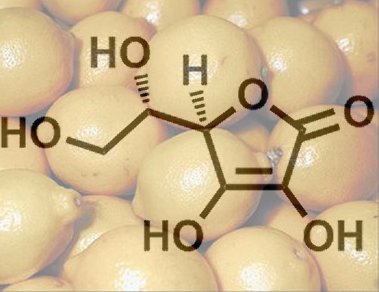We humans are by no means perfect from a biochemical standpoint. On the contrary, there are many substances essential to life that we need specifically to incorporate into our diets, because the body is incapable of synthesizing them. In the absence of these substances, for example, vitamins, we become ill.
We are hit especially hard in the absence of vitamin C, as then we develop scurvy. Less than 100 years have passed since chemists and physiologists clarified the molecular causes of this terrible disease, thereby freeing mankind from its consequences forever. In gratitude, we provide here a brief retrospective glance at the situation.
1 Historical Background
1.1 Nutritional Deficiencies
As with every other life form, humans are obliged, through the proper intake of nutrients, to counterbalance their daily energy expenditures and material losses that result from degradation and excretion (homeostasis). Were the corresponding balances to remain negative over a prolonged period of time, the resulting chronic malnourishment would cause serious illness:
- with undernourishment, the body’s essential nutrient and energy needs are no longer assured, thus leading to emaciation and eventual starvation;
- nutritional deficiencies, i.e., ingestion of insufficient quantities of vitamins or minerals, result in serious metabolic disease, again with potentially fatal consequences.
Mankind has always been plagued by malnutrition of various sorts, of which famine has probably caused the most deaths, both in the past and still today.
 Among the various nutritional deficiencies, a deficiency in vitamin C, which manifests as scurvy, has certainly led to the most fatalities [1]. The ancient Egyptians were already acquainted with scurvy, but it first attracted serious attention with the conquest of the world’s oceans. Indeed, as recently as the mid-19th century it was still regarded as a condition to which only mariners were subject.
Among the various nutritional deficiencies, a deficiency in vitamin C, which manifests as scurvy, has certainly led to the most fatalities [1]. The ancient Egyptians were already acquainted with scurvy, but it first attracted serious attention with the conquest of the world’s oceans. Indeed, as recently as the mid-19th century it was still regarded as a condition to which only mariners were subject.
Here, we trace the long path from the ailing crews of medieval sailing ships, through a series of brilliant Nobel Prize winners, to modern-day vitamin C tablets.
1.1 Scurvy as a Disease Found Only at Sea
By the late Middle Ages, technical progress in shipbuilding made it possible, for the first time, for Europeans to undertake voyages over the world’s seas that lasted several months. The primary goals of many of these “voyages of discovery” was the opening of a new and cheaper trade route to India and East Asia, as well as the discovery and conquest of foreign lands to exploit the anticipated riches and resources. Many seamen paid with their lives in the quest to alleviate the chronic financial difficulties of the European aristocracy. Thus, Vasco da Gama lost over half of his crew in the course of circumnavigating the Cape of Good Hope (1497–99). The cause of these deaths was an enigmatic disease known as “scurvy”.
What is Scurvy?
Typical symptoms of the disease are small bruises under the skin (see Fig. 1) visible as purple flecks, extensive swelling and inflammation of the gums with subsequent loss of teeth, anemia, and general weakness, leading ultimately to death.
In the journal of Jacques Cartier [2], who, with his three sailing ships, was forced to spend the winter of 1535/36 in the St. Lawrence River near present-day Quebec City, Canada, various entries vividly illustrate the ghastliness of this disease:
“Some [of the crew] lost all their strength, and were no longer able even to stand on their feet. Then their legs swelled up. Their muscles shriveled, and became black as coal. With others their skin became speckled everywhere with bloody spots of a purple color. This rose to their ankles, thighs, shoulders, arms, and necks. Their mouths began to reek. Their gums became so foul that they dropped away to the very roots of their teeth, almost all of which they lost. The disease spread throughout our three ships with such a risk of contagion that, by the middle of February, less than ten men of our hundred-man crew remained fit.”
 To the good fortune of the crew, Captain Cartier obtained from the local Indians a remedy for this unknown disease: namely, evergreen twigs from the tree they referred to as “Anneda” (see Investigators in the Fight Against Scurvy). As a test, two of the ailing seamen were forced to drink a brew concocted from these twigs. The remedy helped almost immediately, so this treatment was given to the entire crew. Literally all the patients were completely healed within a few days.
To the good fortune of the crew, Captain Cartier obtained from the local Indians a remedy for this unknown disease: namely, evergreen twigs from the tree they referred to as “Anneda” (see Investigators in the Fight Against Scurvy). As a test, two of the ailing seamen were forced to drink a brew concocted from these twigs. The remedy helped almost immediately, so this treatment was given to the entire crew. Literally all the patients were completely healed within a few days.
Cartier brought a few samples of “Anneda” back with him to France, where the plant became known as “tree of life” or “arbor vitae” (Thuja occidentalis) because of its healing powers [4]. Today it is still highly prized, but now as a hedge plant (see Plants with Anti-Scurvy Activity).
However, knowledge of the healing powers of arbor vitae sank into oblivion almost immediately after Cartier’s return, such that another French ship, forced to spend the winter on the St. Lawrence only two years later, found itself utterly helpless in the face of scurvy, and most of its seamen died.
James Lind
We owe an important advance in the battle against scurvy to the Scottish physician James Lind. At the age of 30 he was serving as the ship’s doctor on the British vessel “HMS Salisbury”, and on a voyage between 1746 and 1747 he was similarly forced to deal with a crew that came down with scurvy. In the course of his attempts to treat the disease he carried out a carefully controlled experiment: 12 ailing seamen were divided into six pairs, who, in addition to their normal diets, consumed the following supplementary rations daily [1]:
- Pair 1: 1 L each of apple wine
- Pair 2: 25 drops each of dilute sulfuric acid
- Pair 3: two tablespoons each of vinegar, taken prior to their meals three times each day
- Pair 4: a quarter liter of seawater
- Pair 5: two oranges and a lemon
- Pair 6: 4 mL of what was in those days regarded as a medicinal cure-all, a paste made from peppercorns, dried horseradish root, garlic, and various tree gums.

The result was unambiguous: Only the seamen “treated” with citrus fruit were quickly cured. For James Lind, the case was absolutely clear: fresh oranges and lemons can cure scurvy! Consistent with the state of medical knowledge in his day, Lind attributed scurvy to a blockage of the pores of the skin that prevented escape of corrupt “odors” (or “vapors”) and “bodily fluids” (or “humors”).
Given his therapeutic success, as published in 1753, scurvy ought to have now been banished from ships, once and for all. What a delusion!
Gilbert Blane
Lind’s discoveries, like those of Cartier, were again simply ignored by those in mainstream medicine. Several decades later, in 1781, Gilbert Blane, the doctor of another Scottish ship, studied the tragic loss of seamen during a ten-month voyage; 1600 men died, but only 60 of them at enemy hands. This represented a bitter loss, because at the time the entire British fleet consisted of only 12,000 seamen. Blane reached the same conclusion as Lind: “Scurvy, one of the gravest diseases with which seamen are afflicted, can be infallibly prevented or cured with vegetables and fruits, especially oranges, lemons, and limes.”
Despite the overwhelming body of facts, the British Admiralty declined to adopt Blane’s suggestions, instead favoring other supposed “antidotes”, like molasses, beer, or fresh bread.
However, by lucky coincidence Blane was appointed family physician for the Prince of Wales and this led to a breakthrough. The authority this conferred allowed him to stock “HMS Suffolk”, in preparation for a voyage to East India, with an ample supply of lemon juice. The result was truly sensational, not a single seaman died of scurvy! As a consequence, starting in 1795 every British sailor received a daily ration of lemon juice.
The effect for the British navy was enormous. In 1780, 1457 sailors were treated for scurvy at the Royal Naval Hospital in Portsmouth, whereas the corresponding number for 1806 was a mere two.
In the second half of the 19th century, the navy replaced lemon juice with lime juice. This contained less vitamin C, but limes were readily available from British colonies in the Caribbean. This, by the way, was how British sailors acquired the nickname “limeys”. At the same time, the increased use of copper pipes in the industrial production of juices stimulated oxidative degradation of the vitamin, with the result that scurvy was once again occasionally encountered on British ships. Robert F. Scott’s tragic South Pole expedition (1901–1904) also was supplied with lime juice, and clear symptoms of scurvy appeared several weeks into the venture. This in turn undoubtedly contributed to premature deaths experienced by several of the participants.
Other Approaches
A few captains adopted their own alternative methods for combating scurvy. Thus, Captain James Cook,  in his circumnavigation of the globe (1768–1771), discovered the positive effects conferred by sauerkraut, and managed to eliminate scurvy entirely from his ships by issuing a daily ration of sauerkraut. Dutch whalers, prior to spending the winter in the arctic, collected large quantities of “scurvy grass” (Cochlearia officinalis), which they then doled out in small portions for daily consumption. Ranunculus ficaria, known as “pilewort”, “smallwort”, or “fig buttercup”, was also shown to be effective against scurvy (see Plants with Anti-Scurvy Activity).
in his circumnavigation of the globe (1768–1771), discovered the positive effects conferred by sauerkraut, and managed to eliminate scurvy entirely from his ships by issuing a daily ration of sauerkraut. Dutch whalers, prior to spending the winter in the arctic, collected large quantities of “scurvy grass” (Cochlearia officinalis), which they then doled out in small portions for daily consumption. Ranunculus ficaria, known as “pilewort”, “smallwort”, or “fig buttercup”, was also shown to be effective against scurvy (see Plants with Anti-Scurvy Activity).
Lack of General Therapeutic Knowledge
Nevertheless, individual success stories, reported since the 13th century, with respect to scurvy, failed to gain a foothold in general therapeutic knowledge. There were several reasons for this:
- Absence of a functional scientific communication system.
- Seamen seemed to be the only people afflicted, which is a small fraction of the population that did not include the rich and powerful. Therefore, for the medical establishment in general, scurvy was, thus, not of serious interest.
- Providing a ship’s crew with fruit proved to be no guarantee of freedom from scurvy because the vitamin C content of fresh fruit declines drastically upon storage, and the usual methods of conservation, i.e., cooking and concentration, destroy it completely.
- According to medical understanding at that time, it was utterly inconceivable that a dietary deficiency could result in disease. Scurvy was thus blamed on everything imaginable: fog, salted meat, rancid butter, copper pots and pans, sugar, tobacco, laziness, the season of the year, and even poor winds.
Starting from these confused ideas, it is no wonder that every captain had his own well-intended ideas on how to combat scurvy. Moreover, captains of merchant ships were always under considerable pressure, and for reasons of cost they needed to keep time spent in port, e.g., for the loading of fresh fruits and vegetables, to an absolute minimum. Also, lemon juice was an expensive commodity, so dilute sulfuric acid was often substituted for citrus fruit, the idea being that acidic character was (incorrectly) assumed to be the source of the latter’s healing powers.
Only in the second half the 19th century, when the provisioning of ships with fruits and vegetables became a matter of legal requirement, did scurvy gradually disappear from the world’s seas, first on naval fleets, and later on commercial vessels as well.
1.2 Scurvy as a Land Disease
Today we know that, in fact, scurvy has plagued mankind in northern parts of Europe, America, and Asia for millennia [6]. Especially during the winter months, when fresh fruits and vegetables were chronically in short supply, and the situation was worse during the traditional fasting for Lent. The threat was not limited to the poor. Indeed, the upper classes were often hit even harder, because many aristocrats regarded fruits and vegetables as sustenance for the lower classes!

Henry the Eighth (1491–1547; pictured) is a prime example of a Renaissance sovereign who was seemingly well-nourished, yet at the same time undernourished [7].
This English king subsisted almost exclusively on meat and fowl, avoiding fruit because he believed it to be a cause of dermatitis and fever. Moreover, he was a strict adherent to fasting at Easter, which caused his health to suffer drastically every spring. During the last ten years of his life he became grossly overweight, and suffered from incurable ulcers on his legs, fever, purple flecks on his skin, and the other symptoms typical of scurvy.
Henry VIII, the very symbol of a well-nourished monarch, abounding in strength, was in fact a man suffering severely from scurvy. It is perhaps no coincidence that he died on the 28th of January, 1547, in the middle of winter [7].
Scurvy broke out on land whenever there were inadequate provisions of food, especially in periods of famine resulting from poor harvests or war. For example, there were dramatic outbreaks of scurvy during the Irish potato famines of 1846/47, the Crimean war (1854–56), and in the Balkans during the First World War.
Late in the 19th century, the pediatrician Thomas Barlow discovered a second tragic aspect of scurvy. At the London “Hospital for Sick Children” he treated numerous infants under the age of two suffering from “acute rickets” [8]. Rickets is caused by a vitamin D deficiency, and leads to impaired bone growth, particularly in children. Barlow made note of the fact that not all the symptoms he encountered were in fact consistent with rickets. Autopsies on affected children showed extensive internal bleeding, for example, between their femurs and the surrounding layers of connective tissue [9], as well as serious hemorrhaging in deep skeletal muscles. These exact characteristics had also been described 100 years earlier by James Lind. Barlow recognized the match between “acute rickets” and scurvy, although the inflamed gums, so typical of scurvy, were rare in small children. Barlow successfully applied Lind’s proposed remedies, and with a diet of fresh potatoes, fresh milk, and orange juice his young patients rapidly recovered.
Barlow also noted that this scurvy in infants was in no sense a consequence of poverty, but rather of a diet biased toward biscuits, oatmeal, butter, and tea. Children who were breastfed or nurtured with fresh dairy milk did not become sick. Unfortunately, it was increasingly the fashion, especially among middle-class families in the late 19th century, to wean infants as soon as possible, and nurture them with boiled or condensed milk. The result was a proliferation of scurvy in infants, also referred to as Barlow’s disease.
In retrospect, scurvy should be designated one of the greatest tragedies in the history of mankind, though it is seldom regarded as such, despite having caused the death of more than two million people prior to the start of the 20th century.
From our perspective it is hard to understand why the available facts were not put together centuries ago to give a clear picture, and thus enable the fact that scurvy was due to a dietary deficiency, and therefore readily remediable, to be recognized. On the other hand, perhaps we would never have discovered the true cause without the help, by way of an essential scientific leap, from a familiar household pet: the guinea pig …
More on the guinea pig’s role will be found in the next part …
References
[1] K. J. Carpenter, The History of Scurvy and Vitamin C, Cambridge University Press, Cambridge, UK, 1988.
For a relevant school project, see: H.-P. Haseloff, U. Mauch, Das Vitamin C Projekt, Verlag Moritz Diesterweg, Frankfurt/M., Germany, 1989.
[2] H. P. Biggar, The Voyages of Jacques Cartier, F. A. Acland, Ottawa, Canada, 1924.
[3] V. Ho, P. Prinsloo, J. Ombiga, New Zealand J. Med. Ass. 2007, 120, 2729. Link
[4] J. Rousseau, Proc. XIX Congr. Int. Physiol., Montreal, 1953, 117.
[5] H. Blankesteijn, L. Hacquebord, New Scientist 1993, April 3, 38. Link
[6] C. Roberts, K. Manchester, The Archaeology of Disease, Cornell University Press, Ithaca, NY, USA, 1997. ISBN: 9780801484483
[7] M. Kybett, History Today 1989, 39 (9), 19. Link
[8] P. R. Evans, Br. Med. J. 1983, 287, 1862. Link
[9] C. R. Paterson, Endeavour 1988, 12, 56. DOI: 10.1016/0160-9327(88)90081-6
Prof. Klaus Roth
Freie Universität Berlin, Germany.
Dr. Sabine Streller
Freie Universität Berlin, Germany.
The article has been published in German in:
and was translated by W. E. Russey.
When scurvy was identified as a form of malnutrition, an exciting race for the isolation, structure determination, and synthesis of vitamin C started.
Looking at the chemical and physiological properties of vitamin C and at how it intervenes in many biochemical processes
How much vitamin C do we need in our modern food?
Other articles by Klaus Roth published by ChemistryViews:
- In Espresso — A Three-Step Preparation
Klaus Roth proves that no culinary masterpiece can be achieved without a basic knowledge of chemistry
DOI: 10.1002/chemv.201000003 - In Chocolate — The Noblest Polymorphism
Klaus Roth proves only chemistry is able to produce such a celestial pleasure
DOI: 10.1002/chemv.201000021 - In Sparkling Wine, Champagne & Co
Klaus Roth shows that only chemistry can be this tingling
DOI: 10.1002/chemv.201000047 - In Chemistry of a Hangover — Alcohol and its Consequences
Klaus Roth asks how can a tiny molecule like ethanol be at the root of so much human misery?
DOI: 10.1002/chemv.201000074 - In The Chemist’s Fear of the Fugu
Klaus Roth shows that the chemist’s fear of the fugu or pufferfish extends as far as the distinctive and intriguing poison it carries
DOI: 10.1002/chemv.201000104 - In Chemistry of a Christmas Candle
Klaus Roth explains that when we light a candle, the chemistry we are pursuing is not only especially beautiful, but also especially complex
DOI: 10.1002/chemv.201000133 - In Pesto — Mediterranean Biochemistry
Klaus Roth uncovers the nature of this culinary-chemical marvel, and thereby comes to enjoy it all the more
DOI: 10.1002/chemv.201200001 - Video Interview with Klaus Roth
See all articles by Klaus Roth published by ChemistryViews




